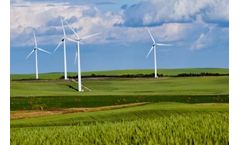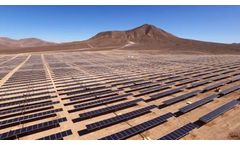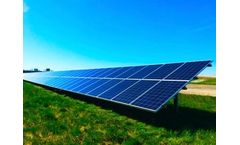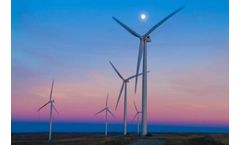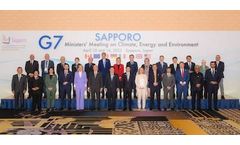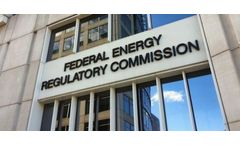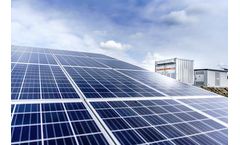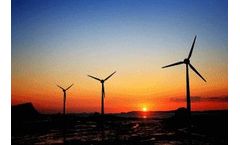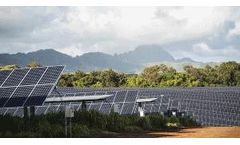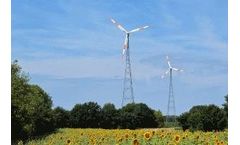Refine by
Wind And Solar Photovoltaic Articles & Analysis
76 news found
The growth in renewable electricity over the past decade was largely achieved by the expansion of wind and solar power. Solar power is the fastest-growing source, rising from just 7.4 terawatt hours(TWh) in 2008 (representing only 1% of the total) to 252.1 TWh in 2023. ...
Due to supportive policies and favourable economics, the world’s renewable power capacity is expected to surge over the rest of this decade, with global additions on course to roughly equal the current power capacity of China, the European Union, India and the United States combined, according to a new IEA report out this week.The Renewables 2024 report, the IEA’s flagship annual publication on ...
Global energy-related carbon dioxide (CO2) emissions rose less strongly in 2023 than the year before even as total energy demand growth accelerated, new IEA analysis shows, with continued expansion of solar PV, wind, nuclear power and electric cars helping the world avoid greater use of fossil fuels. Without clean energy technologies, the global increase in CO2 emissions in the last five years ...
The world’s capacity to generate renewable electricity is expanding faster than at any time in the last three decades, giving it a real chance of achieving the goal of tripling global capacity by 2030 that governments set at the COP28 climate change conference last month, the IEA says in a new report. The amount of renewable energy capacity added to energy systems around the world grew by 50% in ...
As inverter-based resources, including modern wind turbines, solar photovoltaic and battery energy storage systems, continue to drive grid transformation, they may also introduce potential risks to the system, as documented by NERC in multiple disturbance reports. ...
Global additions of renewable power capacity are expected to jump by a third this year as growing policy momentum, higher fossil fuel prices and energy security concerns drive strong deployment of solar PV and wind power, according to the latest update from the International Energy Agency. The growth is set to continue next year with the world’s total renewable electricity capacity rising to 4 ...
G7 leaders expressed concern over global renewable power deployment rates, citing the latest findings from IRENA’s World Energy Transitions Outlook Preview 2023. The report warns that there is a need for a fundamental course correction in the energy transition to keep the 1.5°C target within reach. Targets in the G7 Climate, Energy and Environment Ministers’ Communiqué ...
FERC took several actions on Nov 17 focused on inverter-based resources (IBRs), including proposing that new mandatory standards be developed to enhance the reliability of the bulk electric system. IBRs are solar photovoltaic, wind, fuel cell and battery storage resources that use power electronic devices to change direct current power, produced ...
Costs for renewables continued to fall in 2021 as supply chain challenges and rising commodity prices have yet to show their full impact on project costs. The cost of electricity from onshore wind fell by 15%, offshore wind by 13% and solar PV by 13% compared to 2020. Renewable Power Generation Costs in 2021, published in July by the International Renewable Energy Agency (IRENA), shows that ...
Significant cost reductions can be achieved by front-loading the deployment of renewables, mainly wind and solar photovoltaic, and by utilizing the technologies needed to balance their inherent intermittency, such as energy storage and thermal balancing power plants. ...
Maui is not waiting until 2045 to meet Hawaii's clean energy mandates: The island is likely to become the first interconnected electric transmission system anywhere to operate with 100% wind and solar PV power on an instantaneous basis.Through 2024, Maui is scheduled to bring online more than 175 MW of new solar-storage hybrid power plants. This, in addition to the almost 200 MW of wind and solar ...
The share of renewable energy that achieved lower costs than the most competitive fossil fuel option doubled in 2020, a new report by the International Renewable Energy Agency (IRENA) shows. 162 gigawatts -- or 62 per cent of total renewable power generation added last year -- had lower costs than the cheapest new fossil fuel option. Renewable Power Generation Costs in 2020 shows that costs for ...
With recently announced federal emissions-reduction targets, a push for national power-sector decarbonization, and plummeting wind and solar costs, the United States is poised to deploy major amounts of renewables, and fast. ...
While France and a growing number of countries around the world have been setting ambitious goals for reaching net-zero emissions, variable renewables like wind and solar energy are set to become the main building blocks in power systems worldwide as countries seek to decarbonise their economies. In a new joint analysis commissioned by the French Ministry for the Ecological Transition, the IEA ...
The Covid-19 pandemic represents the biggest shock to the global energy system in more than seven decades, with the drop in demand this year set to dwarf the impact of the 2008 financial crisis and result in a record annual decline in carbon emissions of almost 8%. A new report released today by the International Energy Agency provides an almost real-time view of the Covid-19 pandemic's ...
Global coal demand is expected to decline in 2019 but remain broadly stable over the next five years, supported by robust growth in major Asian markets, according to the International Energy Agency’s latest market analysis and forecasts. The weakness in coal demand this year results mainly from coal-fired electricity generation, which is set to experience its largest ever ...
” The majority of utility-scale solar projects utilize single-axis solar trackers. In regions with high solar irradiance, trackers can produce a 20 to 30 percent increase in energy output over fixed-tilt systems. ...
Upon completion of the Permian Energy Center, Ørsted will become the first energy company to operate the full spectrum of onshore and offshore wind, solar PV and storage solutions in the U.S. market. The Permian Energy Center will comprise 420MWac of solar PV and 40MWac of battery storage located on a 3,600-acre site alongside existing oil ...
Deep disparities define today’s energy world. The dissonance between well-supplied oil markets and growing geopolitical tensions and uncertainties. The gap between the ever-higher amounts of greenhouse gas emissions being produced and the insufficiency of stated policies to curb those emissions in line with international climate targets. The gap between the promise of energy for all and the ...
Deep disparities define today’s energy world. The dissonance between well-supplied oil markets and growing geopolitical tensions and uncertainties. The gap between the ever-higher amounts of greenhouse gas emissions being produced and the insufficiency of stated policies to curb those emissions in line with international climate targets. The gap between the promise of energy for all and the ...

